With its Automatic Link accessory and eponymous iOS app, third-party firm Automatic takes smartphone-to-car integration to the next level, empowering users to save gas, improve driving habits and keep tabs on automobile health with an interactive mobile experience.
Automatic "gamifies" driving by tracking a user's driving habits, like fast starts, hard braking and speeding, then assigns a score based on the measured statistics. The end game is gas efficiency, but since the system is hooked in to the car's onboard computer, it can do much more. For example, Automatic can notify drivers when fuel is running low and calculate an estimated range based on current driving habits.
The system can also decipher "check engine light" codes and reset them in-app, while a safety option lets users to set up an emergency phone number to be contacted if an accident is detected.
In many cases, the information and features Automatic provides goes far beyond OEM-installed solutions.
Design
At the heart of Automatic's system is the "Automatic Link," a Bluetooth Low Energy (Bluetooth 4.0) device with an OBD-II connector for plugging into a car's onboard diagnostics computer. The hardware connects to an iPhone or iPad via the Automatic app, tapping into the devices' GPS capabilities to deliver useful driving information and accurately calculate fuel expenditure.
As mentioned above, the dongle can also keep tabs on a vehicle's health by parsing data offloaded from a car's onboard computer to the Automatic app. An accelerometer is also included to detect serious crashes.
Setup
Setup is a multi-step process, but isn't what we would consider complicated. We downloaded the app from the App Store, followed some basic account creation steps, entered the six digit identifier of the Automatic hardware (labeled on its side), and used the iPhone's camera to scan the VIN number of our vehicle. The barcode is commonly found on a sticker on the car, either on the dashboard, or in the doorjamb of the driver's door. If you can't find your barcode for the VIN, you can enter it in manually.
The app advises you when to plug in the Automatic Link device to the car's OBD-II port. OBD-II ports are almost always under the dashboard on the driver's side of the car. There are exceptions to this: sometimes they're behind a door in the dashboard center stack, or somewhere in the passenger footwell area. It doesn't make a difference, because you plug it in once and forget about it.
Performance
The OBD-II port powers-on Link every time the car is started. With the phone in my pocket and Bluetooth turned on, the Automatic app starts logging that we're going for a drive. It beeps every time I use too much gas pedal pulling away from a stoplight. It beeps every time I hit the brakes a little harder than it thinks I should. It beeps when we go over 70 miles per hour for a few minutes.
When the car is turned off, trip statistics are displayed in-app, including average miles per gallon. While on the road, Automatic can warn us when we're low on gas. Not all cars support this feature, however. Our 2001 Honda CR-V does not, while a 2005 Cadillac CTS does.
Unfortunately, when you're actually driving, the app doesn't show anything that interesting. You see "Currently driving" and a map with your current location, but the app won't update statistics of the drive until you turn off the car, signaling the end of the drive.
This is probably a decision that was made to avoid distractions, but we would have liked to have seen something more than "Currently driving," like an instant estimated miles-per-gallon statistic.
As a side note, we found Automatic classifies "hard" accelerations as speeding up 7 miles per hour or more in one second, equivalent to going from 0 to 60 miles per hour in about 9 seconds. In many cars, you have to floor the gas pedal to do this. The short version is, the car is more fuel-efficient accelerating slowly rather than quickly.
Check Engine Light
And all was well, until one of our cars had a "check engine" light turn on. Automatic told us that it was a low-catalyst code, or the catalytic converter failing. (Well, technically, it could be the catalytic converter, or it could be either of two O2 sensors. The car measures the difference in O2 before and after the catalytic converter, and if an O2 sensor is failing, it could also throw this code.)
We used Automatic to clear the code, so we could see how quickly the error recurred. It turns out, rather quickly. Knowing that, we will be changing out the catalytic converter soon. It helpfully offered to let us look up the code on the web or locate local mechanics.
The ability to reset codes is pretty cool. And knowing that we could be spending less on gas if we kept the speed under 70 miles per hour more frequently, while not a huge revelation, is a useful piece of information. Automatic wrote in a blog post about one of their employee's highway-driving habits, "Driving an average of 5 MPH faster than the 65 MPH group, Ted saves only 4 minutes for every hour on the road but spends an extra $46 on gas every month."
We're not convinced of every choice Automatic makes when rating our driving, however. Hard stops matter because they're hard on the car's brakes and suspension, but they don't really affect gas mileage if the car has a manual transmission. When we came to a stop in our 6-speed, we put the clutch in, so the engine was running at idle, not revving higher as we were slowing down.
In fact, we frequently use the clutch and coast to conserve gas, and we're not sure Automatic had manual-shift drivers in mind for their scoring system. We recognize that we're in the minority of US drivers. Or, it's possible that putting the clutch in doesn't have as much affect as we think it does, because letting it back out means the engine revs back up quickly and inefficiently. That's the lesson we're learning from Automatic: gradual changes in everything, stop, start, and managing gear changes lead to less wear on the car (we knew this part) and more efficiency.
Of course, when I give it a little gas in first to get up to speed, that's not called hard acceleration, that's driving. The Automatic folks know that it's different for every car, but use this one-size-fits-all rule rather than adjust for each individual car-and-engine combination.
The information furnished by Automatic is useful, though we wish the system included a constantly updating "estimated MPG" function. Such systems have been available from numerous car manufacturers for some time, and their solutions have access to the same data as Automatic.
We (fortunately) were not able to test the "text someone in case of accident" feature, though it can be assumed the function works as advertised.
Integration
Automatic also integrates with the Nest Learning Thermostat and other connected devices via IFTTT.com, which also has a nice iOS app. This makes it possible to set up things like:
Automatic can let your Nest thermostat know when you've left the house and turned on your car. Nest can then turn down your thermostat so you're not heating or cooling an empty home.
When you're on your way home from work, Automatic detects when you've left work and sets the temperature at home so the home is comfortable for your arrival. These work great for a home where everyone is out of the house when one car has left, but may not work perfectly for a more complex family schedule. But you can do other things, like send SMS, twitter, facebook, or email based on what Automatic is doing.
For example, we could have it message our significant other on leaving work, turn off the Philips Hue lights when leaving the home, and turn them back on when arriving at home.
The triggers Automatic provides via IFTTT are:
- Ignition turned on
- Ignition turned on in a specific area
- Ignition turned off
- Ignition turned off in a specific area
- Check engine light turned on
- Check engine light turned off
- Trip completed
- Hard braking event
- Velocity exceeded threshold
- Summary of a trip
- Hard acceleration event
- Location
- Vehicle
- Parking Location Changed
Automatic integrates with anything else that has a channel in IFTTT, so that means it's possible to put your drives into Jawbone UP's application for a clearer picture of when you were walking vs. driving, and it's possible to export data on drives over time into a Google Spreadsheet, text or email a map showing where you parked, or send messages to Slack letting people know you've arrived at work. Or you could post photos of your road trips to Facebook. There are some really useful cases, and some silly ones. We don't judge.
The spreadsheet is really quite good, setting up columns for these items, one row per trip:
- VehicleName
- TripStartedAt
- TripEndedAt
- TripDuration
- TripDistanceMiles
- AverageMPG
- FuelVolumeGal
- FuelCostUSD
- HardBrakeCount
- HardAccelCount
- DurationOver70MPH
- DurationOver75MPH
- DurationOver80MPH
- TripPathImageMapURL
- StartLocationLon
- StartLocationLat
- StartLocationMapURL
- EndLocationLon
- EndLocationLat
- EndLocationMapURL
For data geeks, this is pretty good.
Conclusion
We liked Automatic so much that we ended up purchasing a second unit so we had one in each car. We really like the idea of the car becoming smarter, and Automatic is a good step in that direction. People talk a lot about the "Internet of Things" and the expense involved in buying smart lightbulbs for every socket in the home, but if all you did was get a thermostat that works with IFTTT and Automatic, we think the price of entry is worth it.
We did have a few troubles with Automatic, all with losing connection between the Link and the app. The Link device is a Bluetooth 4.0 iBeacon, arguably the largest install base of iBeacons in the world (more sold than there are Apple retail stores.) The solution to restoring connection was to Erase Network Settings in iOS. We also tried to solve the problem by setting up the link as if it were a new car, but with the same VIN.
The app recognized it was the same VIN and preserved driving history, while keeping the same two cars we own in the car list. We didn't end up with any extra Honda CR-V in the app's cars list. Automatic's support team assures us that attempting to re-add the car is no longer necessary, the problem which caused this was resolved in recent app updates, and that it has been solved for users across iOS 7.1, 7.1.1, and 7.1.2.
Automatic handles all OBD-II code scanning and resetting, it tells us our mileage and guides us to attempt to drive better and the app quickly determines when we switch cars. In short, we like it, and would absolutely buy it again.
Score: 4 out of 5
Pros
- Stats over time to help improve fuel mileage
- Code scanning and resetting
- IFTTT integration (Nest, Hue, Google Drive, SMS, etc.)
- Sending a Crash Alert option
Cons
- Bluetooth issues (solved at the phone)
- No live update on MPG
- Doesn't reveal what speed or RPM engine is most efficient
Pricing and Availability
The Automatic Smart Driving Assistant is now available in the U.S. for $99.95 from Amazon.com and in US Apple Retail Stores.
 Victor Marks
Victor Marks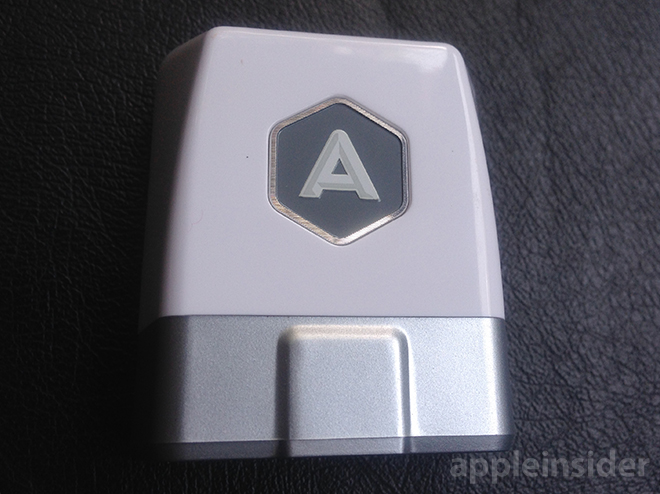
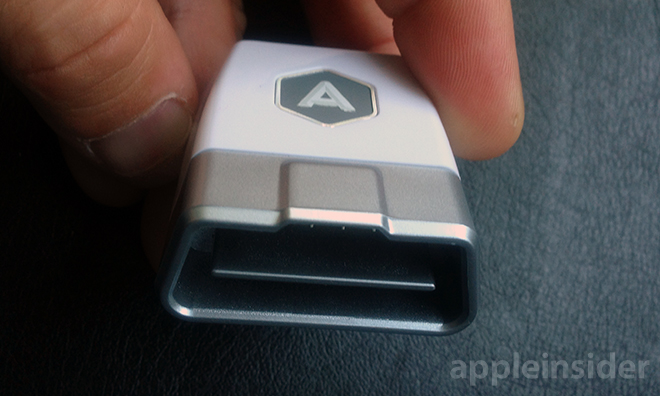
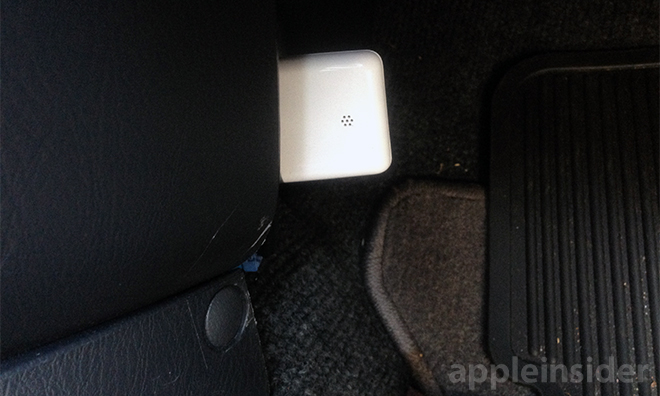
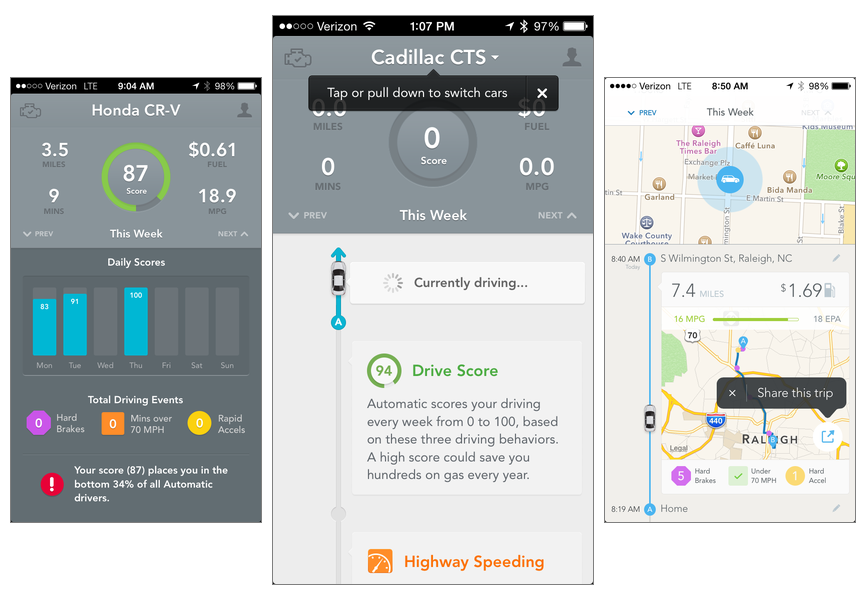

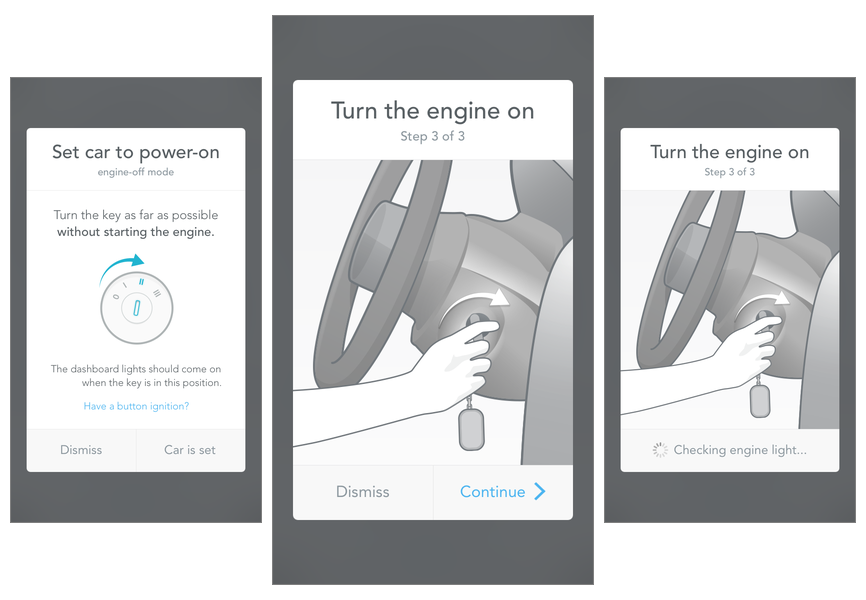
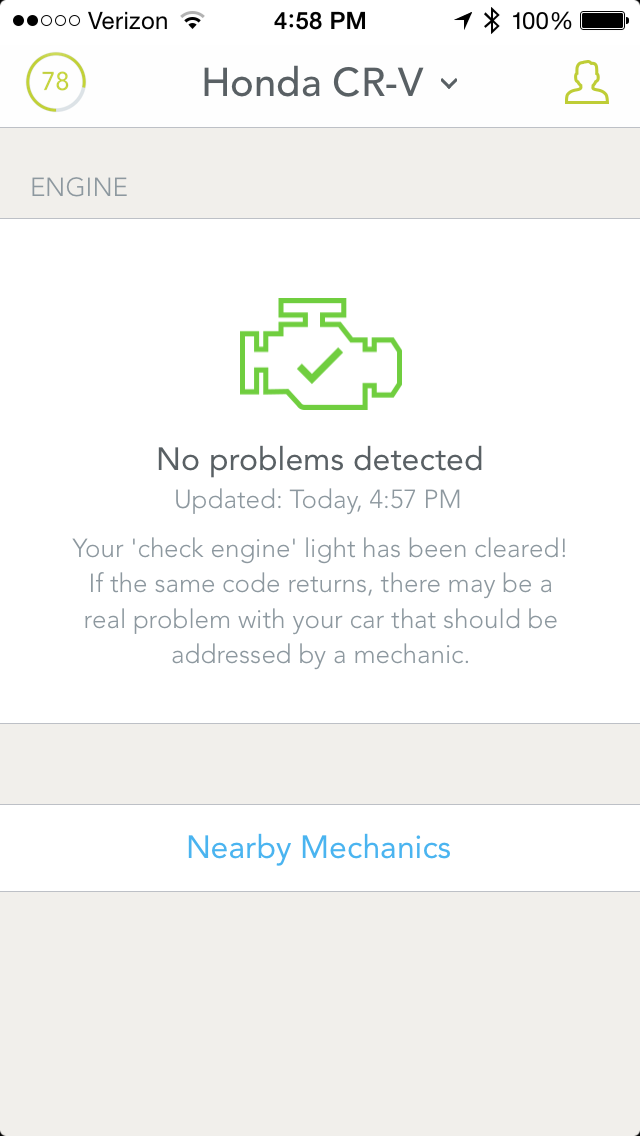



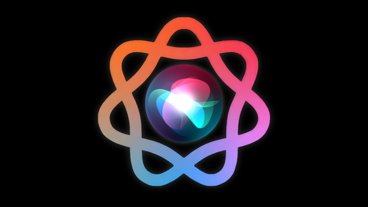


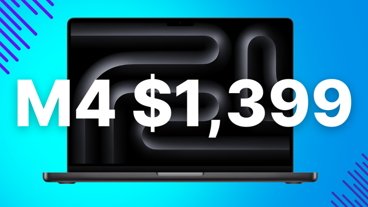








 William Gallagher
William Gallagher
 Christine McKee
Christine McKee
 Stephen Silver
Stephen Silver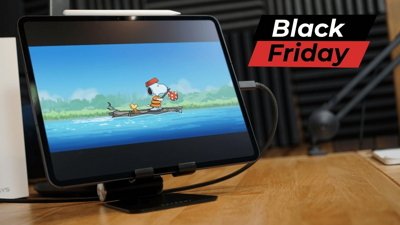

 Charles Martin
Charles Martin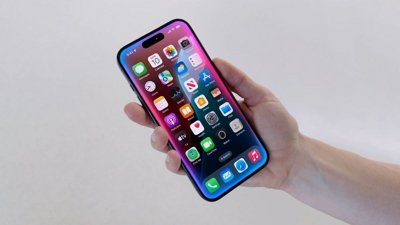
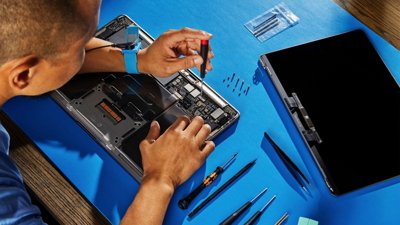

 Amber Neely
Amber Neely
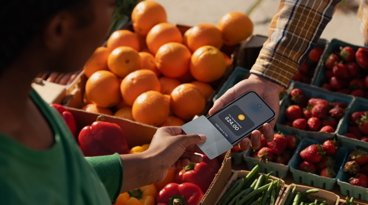






27 Comments
Not for my car. :( Even though I selected my car from the list on initial setup -- no warnings popped up telling me that my car wasn't supported. I received a message from support a few weeks later telling me to remove it at once or damage to my car would result and to return it. So, I did. In short, the database on their website of cars (like my 2005 BMW) that aren't supported isn't mirrored on the application. They need to fix that. Or, to update their language that virtually every car (well, except for one of the most popular car brands on the road) since 1996 supports this device. Aside from this there are a bazillion things they should do to improve it. For example, the gas consumption should mirror known patterns for your car -- not a generic profile. As shown on their site / app, different cars have different optimum gas consumption. Its not just a generic "don't go over xx speed" BEEP BEEP BEEP and you are wasting gas. It should be specific to the the car I am driving.
hard braking by itself doesn't have anything to do with gas mileage whether the car is manual or automatic.
the engine revving higher when you let out the clutch when slowing down doesn't have anything to do with gas mileage. the increased revs are just the fly wheel spinning and re-engaging with a gear. it doesn't have anything to do with fuel consumption. the same goes for when you are coasting and kick it out of gear or hold the clutch in and then let it back out. the engine revving up quickly has nothing to do with fuel efficiency.
where you lose fuel efficiency is the scrubbing off of a large amount of speed and then needing to use the gas pedal to get back up to speed again. in theory if you don't brake hard you wont need to use as much gas to get back up to speed.
Added to this, there is no facility for inputting actual gas costs so the calculations are using local averages, which are way off if you buy discounted gas.
Be aware that there is as yet NO real time data output display so you cannot read engine data while driving and have no idea about mpg, etc., from moment to moment. Real time data has been promised for almost a year but is a long time coming (vaporware?). The function to find where you left your parked car might be good if you suffer from severe memory loss but you probably shouldn't be driving in such a case!
I used Automatic for about 9 months but have pulled it out until the application gives me the data and settings I really want. As a careful driver with constant weekly scores of 100, it did nothing for my driving!
With some really good application function updates, I might reconnect it but for now it is largely a gimmick that sits unused in my glove compartment.
Sad because I had high hopes 12 months ago and the software team has yet to deliver on the hardware promise.
[quote name="natesf" url="/t/181379/review-automatic-link-works-with-your-iphone-to-make-you-a-better-driver#post_2564704"]Not for my car. :( Even though I selected my car from the list on initial setup -- no warnings popped up telling me that my car wasn't supported. I received a message from support a few weeks later telling me to remove it at once or damage to my car would result and to return it. So, I did. In short, the database on their website of cars (like my 2005 BMW) that aren't supported isn't mirrored on the application. They need to fix that. Or, to update their language that virtually every car (well, except for one of the most popular car brands on the road) since 1996 supports this device.[/QUOTE] You lost me. What wasn't apparent with their database of supported vehicles? [QUOTE]Aside from this there are a bazillion things they should do to improve it. For example, the gas consumption should mirror known patterns for your car -- not a generic profile. As shown on their site / app, different cars have different optimum gas consumption. Its not just a generic "don't go over xx speed" BEEP BEEP BEEP and you are wasting gas. It should be specific to the the car I am driving.[/quote] You lost me again. What supported automobiles are more fuel efficient higher than 70mph than under 70mph? I'd think that physics of wind resistance would be the deciding factor there, but that's neither here nor there as that only affects your [I]score[/I] as Automatic will read what your car's computer says about fuel efficiency. It will not make anything up. Also, as of the most recent update they have allowed one to alter the audible notification for going over 70mph. You can now set it much lower or higher. [LIST] [*] http://en.wikipedia.org/wiki/Fuel_economy_in_automobiles#Speed_and_fuel_economy_studies [/LIST] If I have fault with Automatic is that it's not intelligent enough to know when I'm coasting down a very long and steep hill which pushes me well over 70mph for a couple minutes. I wish it would know that I haven't touched the gas pedal and my fuel efficiency is on a steady increase. I now don't care about my score — only got a 100% a couple times and they were both soft 100s — but instead try to hit a personal goal of 40mpg instead of my previous average of about 32mpg. Driving 60mph when I'm working and coasting down the steeper hills seems to just get me there. I do still try to keep the Hard Brakes and Fast Accelerations down to zero. [quote name="plankton" url="/t/181379/review-automatic-link-works-with-your-iphone-to-make-you-a-better-driver#post_2564716"]Added to this, there is no facility for inputting actual gas costs so the calculations are using local averages, which are way off if you buy discounted gas. Be aware that there is as yet NO real time data output display so you cannot read engine data while driving and have no idea about mpg, etc., from moment to moment. [COLOR=000000]Real time data has been promised for almost a year but is a long time coming (vaporware?).[/COLOR] The function to find where you left your parked car might be good if you suffer from severe memory loss but you probably shouldn't be driving in such a case! I used Automatic for about 9 months but have pulled it out until the application gives me the data and settings I really want. As a careful driver with constant weekly scores of 100, it did nothing for my driving! With some really good application function updates, I might reconnect it but for now it is largely a gimmick that sits unused in my glove compartment. Sad because I had high hopes 12 months ago and the software team has yet to deliver on the hardware promise. [/quote] Being able to input your actual gas price would be great. I'm not so concerned about real time data since I don't look at the app as I drive so I don't think I'd ever use it. I would like to have a web interface for Automatic, like Fitbit [I]et al[/I]. offer, so you can get a better UI for looking at your historical data as well as an option for more stats.
"In fact, we frequently use the clutch and coast to conserve gas ..."
It won't be inexpensive to replace the throw out bearing.
Does the device read all OBDii codes, including those that are manufacturer specific, or just the generic Check Engine Light codes?